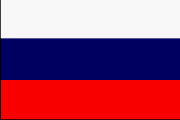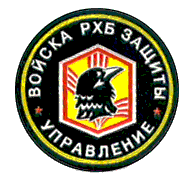





 The Soviet military planned to use nuclear, biological, and chemical (NBC) weapons either to deter aggression or as a response to an enemy attack on the State. Soviet forces had short-, medium-, and intermediate-range SSMs capable of carrying nuclear, chemical, or biological warheads. Additionally, it could employ aircraft
systems and cruise missiles to deliver an NBC strike. If needed, the majority of Soviet artillery (152-mm and above) was capable of firing nuclear or chemical
munitions.
The mission of the Chemical Troops was to defend the armed forces against the effects of "weapons of mass destruction"-- nuclear, biological, and chemical (NBC) weapons. With 50,000 soldiers in 1989, the Chemical Troops constituted the world's largest NBC defense force. The Chemical Troops would perform NBC reconnaissance; mark contaminated areas; and decontaminate personnel, weapons, and
terrain during wartime. They operated 30,000 armored combat vehicles equipped for NBC reconnaissance and truck-mounted systems equipped to spray decontaminating solutions on the surface areas of tanks, combat vehicles, and aircraft. The Chemical Troops demonstrated the use of helicopters for NBC defense during the large-scale radiation cleanup operation after the Chernobyl' nuclear reactor
accident in April 1986. In 1989 the Chemical Troops did not operate offensive delivery systems. Yet the strength of Soviet chemical defense provided an offensive potential by enhancing the ability of Soviet forces to fight on contaminated battlefields. Thus, supported by the Chemical Troops, Soviet forces were better prepared than any other in the world for NBC operations.
The Soviet military planned to use nuclear, biological, and chemical (NBC) weapons either to deter aggression or as a response to an enemy attack on the State. Soviet forces had short-, medium-, and intermediate-range SSMs capable of carrying nuclear, chemical, or biological warheads. Additionally, it could employ aircraft
systems and cruise missiles to deliver an NBC strike. If needed, the majority of Soviet artillery (152-mm and above) was capable of firing nuclear or chemical
munitions.
The mission of the Chemical Troops was to defend the armed forces against the effects of "weapons of mass destruction"-- nuclear, biological, and chemical (NBC) weapons. With 50,000 soldiers in 1989, the Chemical Troops constituted the world's largest NBC defense force. The Chemical Troops would perform NBC reconnaissance; mark contaminated areas; and decontaminate personnel, weapons, and
terrain during wartime. They operated 30,000 armored combat vehicles equipped for NBC reconnaissance and truck-mounted systems equipped to spray decontaminating solutions on the surface areas of tanks, combat vehicles, and aircraft. The Chemical Troops demonstrated the use of helicopters for NBC defense during the large-scale radiation cleanup operation after the Chernobyl' nuclear reactor
accident in April 1986. In 1989 the Chemical Troops did not operate offensive delivery systems. Yet the strength of Soviet chemical defense provided an offensive potential by enhancing the ability of Soviet forces to fight on contaminated battlefields. Thus, supported by the Chemical Troops, Soviet forces were better prepared than any other in the world for NBC operations.
The Chemical Warfare Troops have been renamed Radiation, Chemical, and Biological Protection Troops. The federal program of chemical disarmament signed by Viktor Chernomyrdin on 21 March 1996 projected a budget of 16.6 trillion rubles to be allocated to the Army. The effect of this distribution would be to double the size of the Radiation, Chemical, and Biological Protection Troops, which by the year 2000 would comprise 10,500 servicemen. As of early 2000, Gen. Valentin Yevstigneyev, former head of the Soviet army's 15th Directorate (the military wing of the bioweapons program), was now deputy chief of Russia's Radiological, Chemical and Biological Defense Directorate.
The Chemical Troops are an independent branch that provides support to all the military services, but principally to the Ground Forces. The chiefs of this service reportes directly to the minister of defense. Units of the Chemical Troops respond to the in-branch chief regarding administrative and technical matters but are operationally subordinate to the commander of the formation to which they were attached. Chemical Troops are organized into battalions and companies within armies and divisions. The Chief of Chemical Troops in the General Staff/Ground Forces Headquarters controls several chemical defense and smoke units. The numbers and types of units at this level can vary widely, depending on the size and structure of the Ground Forces they support. The following organization chart represents the types of chemical defense and smoke units that may be available.